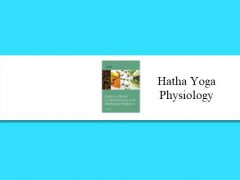Hatha Yoga Practices: Energy Expenditure, Respiratory Changes and Intensity of Exercise
This is a scientific paper on Hatha Yoga practices where various physiological variables were measured. The aim of this study was to critically observe the energy expenditure, exercise intensity and respiratory changes during a full yoga practice session. Oxygen consumption (˙VO2), carbon dioxide output (˙VCO2), pulmonary ventilation (˙VE), respiratory rate (Fr) and tidal volume (VT), were measured in 16 physical posture (asanas), five yoga breathing maneuvers (BM) and two types of meditation. Twenty male (age 27.3 ± 3.5 years, height 166.6 ± 5.4 cm and body weight 58.8 ± 9.6 kg) yoga instructors were studied. Their maximal oxygen consumption (˙VO2max) was recorded. The exercise intensity in asanas was expressed in percentage ˙VO2max . In asanas, exercise intensity varied from 9.9 to 26.5% of ˙VO2max . Highest energy cost was 3.02 kcal min−1. In BM highest ˙VE was 53.7 ± 15.5 l min−1. VT was 0.97 ± 0.59, 1.41 ± 1.27 and 1.28 ± l/breath with corresponding Fr of 14.0 ± 5.3, 10.0 ± 6.35, 10.0 ± 5.8 breaths/min. Average energy expenditure in asanas, BM and meditation were 2.29, 1.91 and 1.37 kcal min−1, respectively. Metabolic rate was generally in the range of 1-2 metabolic equivalents (MET) except in three asanas where it was >2 MET. ˙VO2 was 0.27 ± 0.05 and 0.24 ± 0.04 l min−1 in meditation and Shavasana, respectively. Although yogic practices are low intensity exercises within lactate threshold, physical performance improvement is possible owing to both better economy of breathing by BM and also by improvement in cardiovascular reserve. Other factors such as psycho-physiological and better relaxation may contribute to it.


